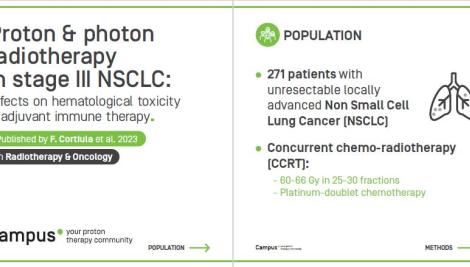Subtitle
Financial Toxicity in Head and Neck Cancer Patients Treated With Proton Therapy
While cost-effectiveness analysis has been used to assess the value of proton therapy for head and neck cancer, it may not fully incorporate empiric comparisons of patients' and survivors' lost productivity and disability after treatment. A cost-of-illness framework for evaluation could address this gap, thereby more comprehensively identifying the value of proton therapy and distinctly incorporating a measurable aspect of financial toxicity in evaluation.
Overall, financial toxicity burdens remain understudied in head and neck cancer patients from a patient-centered perspective. Systematic, validated, and accurate measurement of financial toxicity in patients receiving proton therapy is needed, especially relative to conventional photon-based strategies. This will enrich the evidence base for optimal selection and rationale for payer coverage of available treatment options for head and neck cancer patients.

